Donegal is one of those little towns that you don’t really think about – until you visit it…
Page Contents (click line to jump the text)
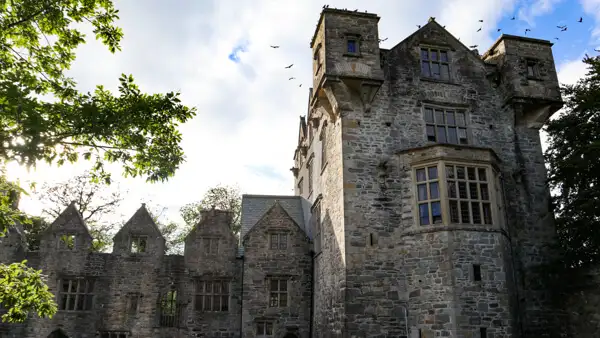
Intro
I was on my motorbike on the way to the cliffs of Slieve League, which I had already read about. Donegal seemed to offer me a suitable place to spend the night.
Of course, I was once again later than expected. There are simply too many beautiful spots along the Wild Atlantic Way, all of which want to be photographed…
Dehydrated, hypoglycaemic and pretty exhausted (not for the first time), I arrived in Donegal. After dragging my luggage up to my room, peeling off my motorbike gear and slipping into a pair of (reasonably) clean jeans, I was faced with a momentous decision: Eat at the accommodation or go for a walk with my camera and find something to eat on the way?
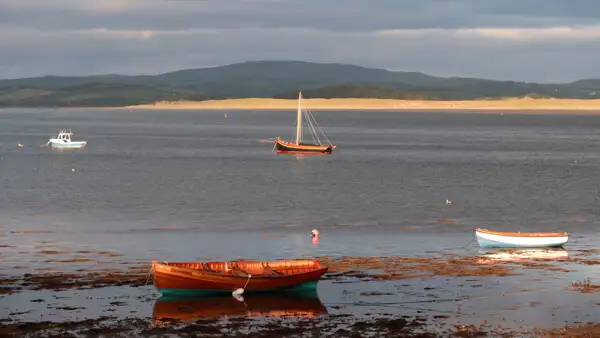
The small market square looked inviting, as did the older streets and alleyways in the town and I wanted to at least take a look at the harbour – so I went out!
And indeed: there’s a nice little castle in the town, a super quaint historic pub opposite and the place is generally inviting for a stroll – and I took a few photos too.
On the way to the harbour I had some fish and chips and found a nice spot on the pier with a view of the bay to enjoy my well-earned dinner. Quite marvellous!
And on the way back I had a beer in the pub and then fell into bed like a stone – it was a lovely day – once again!
We’ve been to Donegal and the surrounding area a few more times. That’s easy for us, of course, because we’ve lived in Ireland for several years (second home).
But let’s take a closer look at Donegal Town:
Some background about Donegal Town and Castle
County Donegal takes its name from the town of the same name, Donegal. City is a big word, because it is just a small town. It is neither the capital nor the administrative centre of the county of the same name, but nevertheless a popular stop for travellers on their way to Ireland’s most north-westerly county.
The Irish used to call County Donegal “the forgotten county” because it was structurally weak and poor and too far away for the politicians in Dublin to be interested in it. Today, it is a region that attracts many Irish holidaymakers due to its scenic beauty, as well as international tourists.
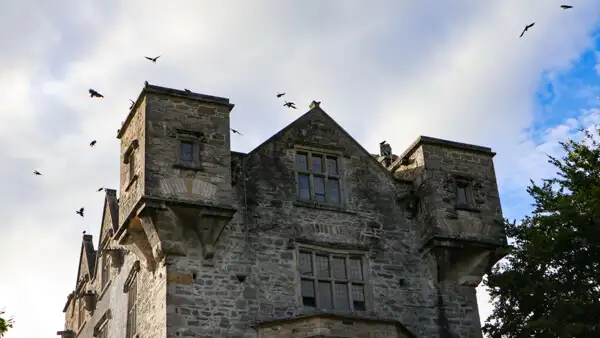
The name Donegal is derived from “Dún na nGall”, which means “fortress of the strangers” in Gaelic-Irish. Danish Vikings had a fortified settlement here in the early Middle Ages, which was destroyed by the Irish High King Murchertaich Mac Lochlainn in the 12th century. However, the first settlers were here thousands of years earlier.
Today’s Donegal Castle is located in the centre of the small village and dates from a later period. It was built in the 15th century and later extended. It was the residence and seat of government of the O’Donnell clan, a very powerful Irish Gaelic noble family. Donegal Abbey was also built by the family.
Visiting Donegal
The best way to explore the small town is on foot. Leave your car near the harbour and wander around a bit. The harbour is worth a visit, with small pleasure craft and fishing boats and a beautiful view of the bay. You will also find the remains of Donegal Abbey at the harbour.

There are several old buildings in the town centre. In addition to hotels and an old, quaint pub, there is also the small but beautiful castle, which you should definitely visit. See: https://heritageireland.ie/places-to-visit/donegal-castle/.
A little south of the town centre you will find the Donegal Craft Village. If you are interested in arts and crafts, or would like to buy some, this is the place to go. See: http://www.donegalcraftvillage.com/.
Donegal used to be connected to the outside world by a narrow-gauge railway. It no longer exists, but there is a railway museum in its place, see: http://donegalrailway.com.
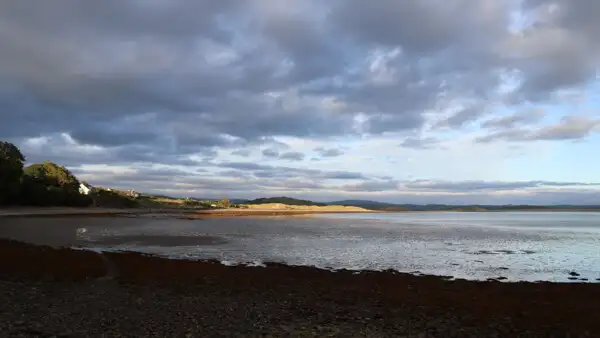
What else you can see in the area
The Cliffs of Slieve League
The cliffs of Slieve League are the highest cliffs in Ireland and therefore even higher than the Cliffs of Moher. You can find them west of Donegal Town near Teelin. You can find my article here: https://ireland-insider.com/the-cliffs-of-slieve-league-majestic-and-marvellous/.
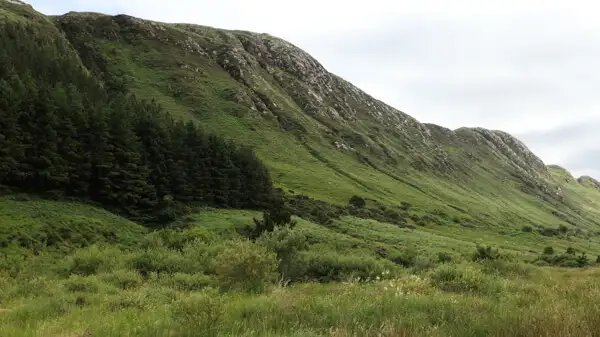
Glencolumbcille and the Folk Village
If you follow the coast a little further west, you will come to Glencolumbcille – a place in an almost kitschy, wildly romantic setting. The Folk Village is a small but beautiful museum village that you should definitely visit. You can find my article about it here: https://ireland-insider.com/glencolumbcille-folk-village-life-in-rural-ireland-in-the-past/.
The Silver Strand
Silver Beach is a beautiful crescent-shaped beach with fine, white sand. It is located near Teelin and Glencolumbcille.
Glenveagh National Park and Glenveagh Castle
In the centre of County Donegal lies a beautiful low mountain landscape, the Glenveagh National Park – a dream for hikers. At its centre you will find the National Park Visitor Centre. From there you can explore the mountain lake Louch Beagh, on the shores of which lies the beautiful Glenveagh Castle. You can walk a short distance or take a shuttle bus; you can’t get directly to the castle by car. See: https://www.nationalparks.ie/glenveagh/.

Conclusion
Donegal Town is very nice to see and also interesting. It’s also a great base for day or multi-day trips into County Donegal.
Whether you want to drive on to the Slieve League cliffs and Glencolumbcille, take a tour of Glenveagh National Park or continue straight on to Letterkenny or Derry / Londonderry, Donegal is a good starting point for all of these.
However, there are only a limited number of places to stay in the city centre and in summer they can be fully booked. But that doesn’t matter, as there are also plenty of B&Bs in the surrounding areas of the city. You’ll find particularly nice and quiet options on Lough Eske, a few minutes outside of Donegal Town.
More interesting articles for you
GLENCOLUMBCILLE FOLK VILLAGE – LIFE IN RURAL IRELAND IN THE PAST
THE CLIFFS OF SLIEVE LEAGUE – MAJESTIC AND MARVELLOUS
A WALK ON THE CITY WALLS OF DERRY / LONDONDERRY
FANAD HEAD LIGHTHOUSE – IN THE FAR NORTH OF IRELAND
Picture credits cover picture: Old Pub at Donegal, photo: Ulrich Knüppel-Gertberg (www.irland-insider.de, www.ireland-insider.com)